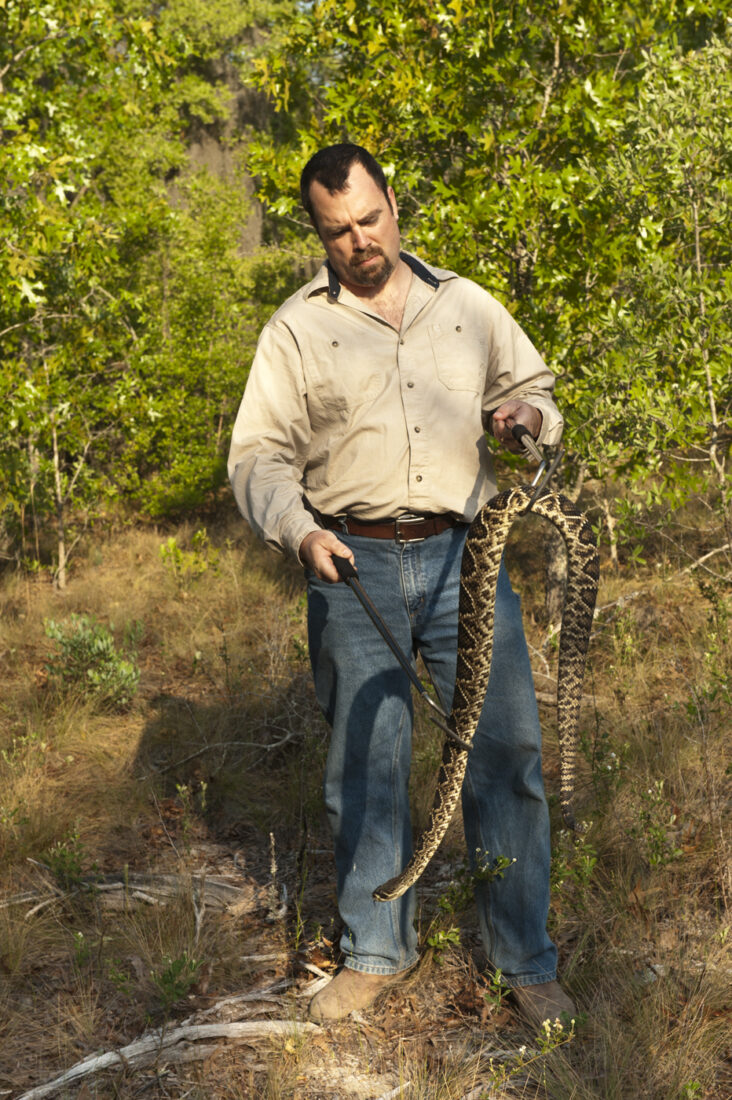We’re entering a time of year when sporting dogs and venomous snakes are most likely to be in each other’s face, says Dr. Chris Jenkins, a biologist and CEO of the Orianne Society, a science-based reptile and amphibian conservation group. Encounters with “piz’nous serpents,” as one old fellow once described them to me, can take place any time of the year in the South, Jenkins says, but late summer and fall is all about the overlap of time and space. Hunting dogs are in the woods and swamps. Rattlesnakes, copperheads, water moccasins, and coral snakes are still active. When the latter takes offense at the former, dog owners need to have a plan. Jenkins is an avid hunter who’s dealt with his own snakebit dog, so he comes to the issue with some unfortunate serpent cred.

Dogs can react differently to a snakebite than humans, he says, just as they can react differently to other pain-causing stimuli. A tough dog might just seem pretty sick for a while, Jenkins cautions, while a human in the same condition might wallow in bed wailing. Complicating the matter are so-called “dry bites,” in which no venom is injected into the victim. Vipers, particularly, can control in some ways whether and how much venom they inject. “The snake isn’t going to eat the dog,” Jenkins explains, “so it’s in their best interest to hang on to venom.” Dry bites aren’t uncommon, but since there’s no way to tell immediately whether Mr. No Shoulders injects your hound with venom or gives it a warning ticket, don’t delay treatment. “If you see a venomous snake strike your dog, I’d get that dog to a vet as soon as possible,” Jenkins says. “I wouldn’t keep running the dog and see how the day evolves.” Beyond that cardinal rule, he recommends some other points to keep in mind to get your four-legged pal the best care possible.
The Bite Plan
Don’t waste time with first aid. Myths about field treatment of snake bites abound. “First aid for a snakebit dog has as much to do with what not to do as what steps to take,” Jenkins says. He’s hunted with folks who carry Benadryl and anti-inflammatory medicines. “In almost all cases, you do not want to use those medicines,” he says. “There’s very little you can do other than get the dog to medical attention right away. A good snakebite kit is a set of car keys and a cell phone.”
Ignore the snake. Don’t waste time trying to find or identify the snake, either. Other than coral snakes—which are rarely encountered—venomous snakes in North America are all pit vipers, and their bites are treated with a similar antivenom. “The longer you wait to get to medical help, the more damage will be done to your dog,” Jenkins says. “Time is of the essence. If you think your dog has been bitten by a venomous snake, head to a vet immediately.”
Call ahead. You might think that rural vets would be more likely to stock antivenom, but the medicine is so expensive, that’s not always the case. You might have better luck in a more populated area. Call the closest vet first, and go from there.
Speak up. Don’t expect every vet to be up to date on the latest snakebite protocols. Suggestions to use Benadryl, NSAIDs, or steroids should put you on watch. “Be a strong advocate for your dog’s health and ask questions,” Jenkins says, “just like you would do for your own health. Do they have experience with snakebite? Do they really know how to treat this?” If you live or recreate in an area with high numbers of venomous snakes, consider joining Facebook’s National Snakebite Support Group for resources to advocate for appropriate care. And familiarize yourself with this Unified Treatment Algorithm endorsed by snakebite experts. It’s a heavy lift, but in the heat of the moment, it can inform your conversations with a medical provider.
Have a payment strategy. If your dog needs antivenom, know that it is expensive. You could be on the hook for potentially several thousand dollars. Being prepared for the wallet wallop will help you make the best decisions in a stressful situation.
An Ounce of Prevention
Jenkins is a strong believer in snake aversion training, which teaches dogs to avoid snakes. “People send their dogs off for obedience training or retriever school,” he says. “I take this as seriously as any other kinds of training. It can definitely work.” There are tons of resources online that provide guidance on this type of training, or consult a professional trainer.








